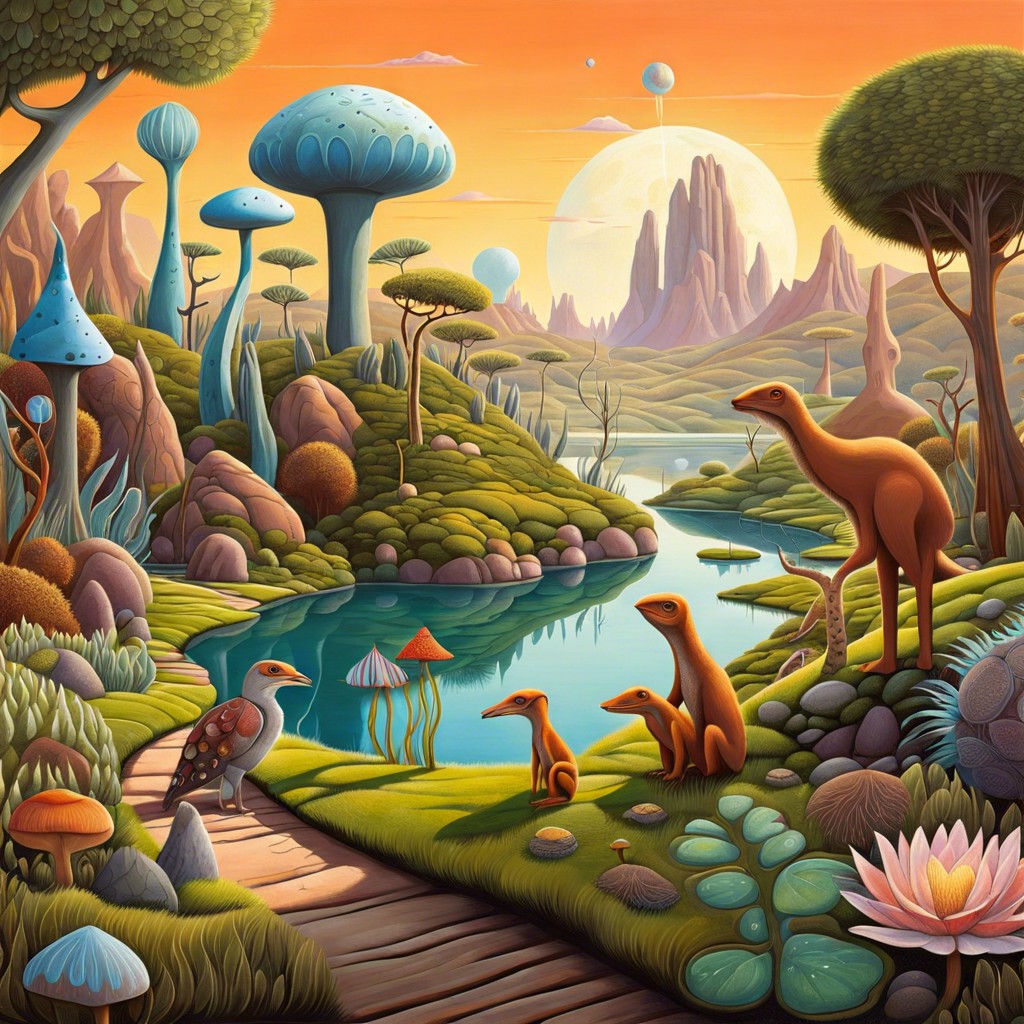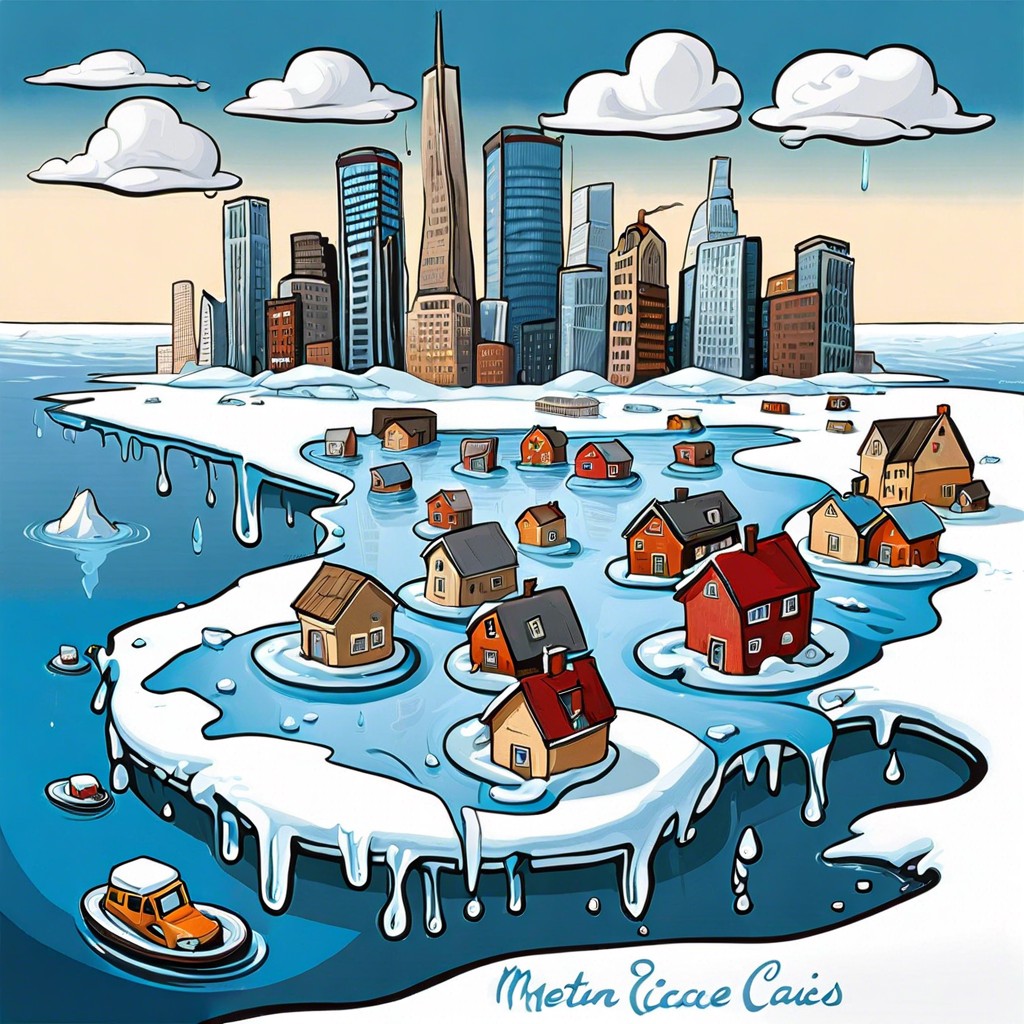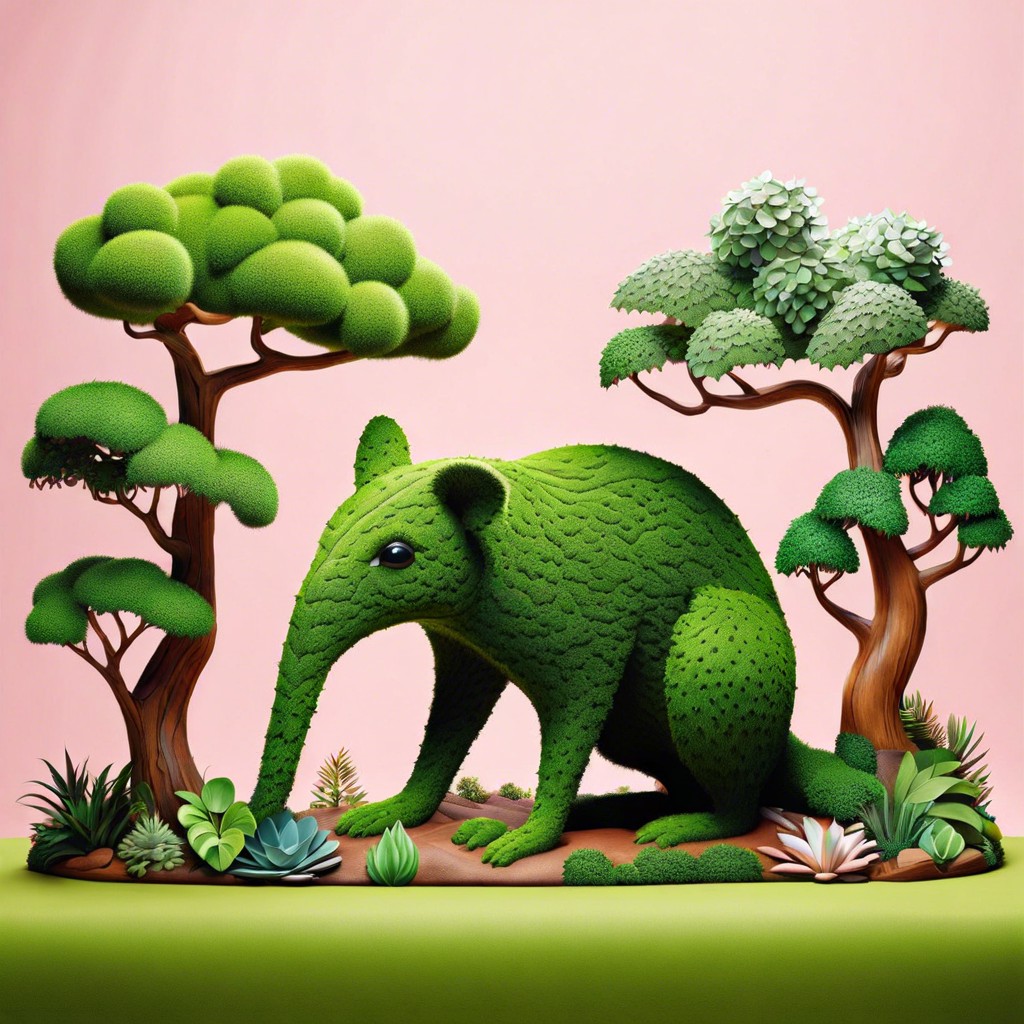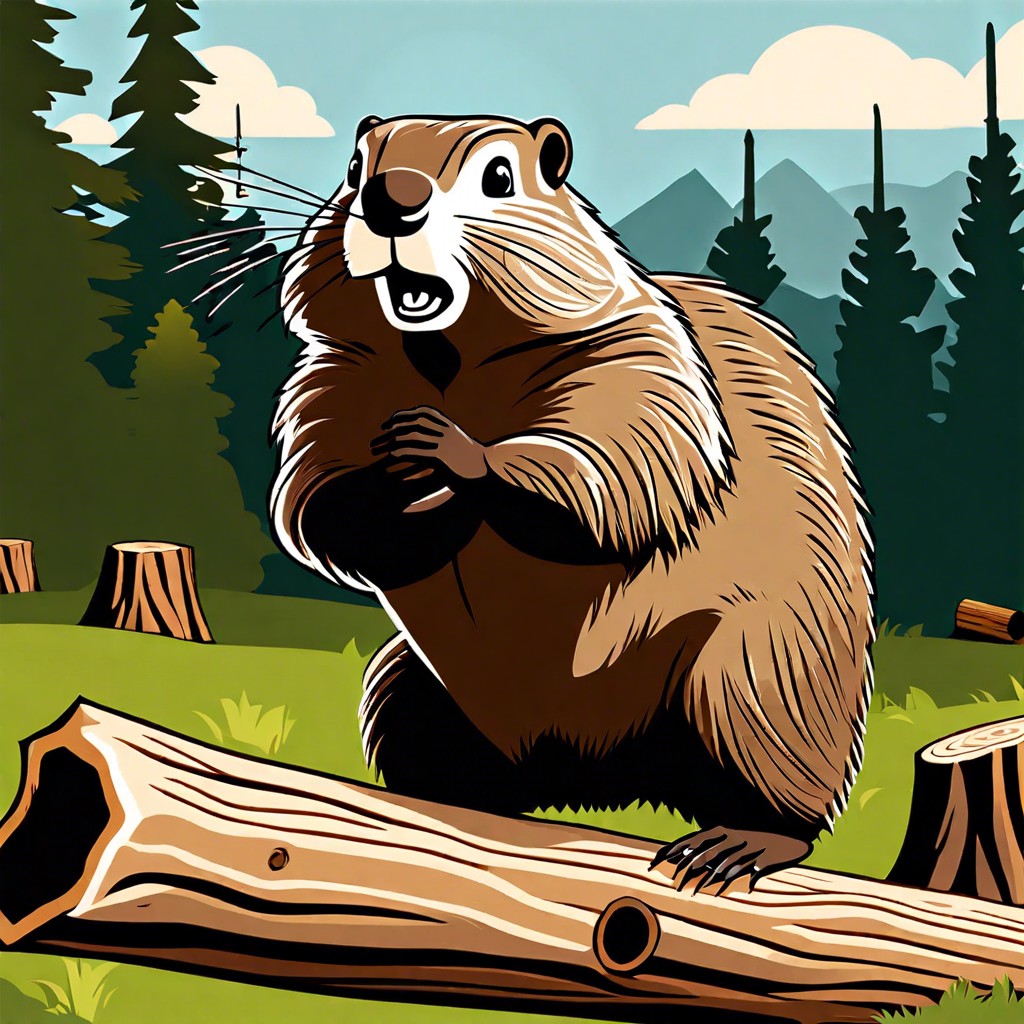This article will reveal what the world might look like if humans never existed and how nature would thrive.
Imagine a world without human selfies, skyscrapers, or fast food chains. What if humans never existed to leave their indelible mark on the Earth? From the wild, flourishing animal kingdoms to untouched natural landscapes and cleaner, crisper air, the planet would paint a very different picture. Step into a tantalizing exploration of an alternate Earth, free from humans. Dive into the epic saga of animal empires, evolutionary twists, greener pastures, and atmospheric serenity. Ready for a wild, human-free ride? Buckle up!
Key takeaways:
- Animal populations thrive without human interference.
- Evolutionary paths shift for dominant species.
- Climate and geography evolve without human impact.
- Pristine atmosphere and oceans without human pollution.
- Natural landscapes flourish untouched by human hands.
The Impact On Animal Populations and Ecosystems

Without humans around, imagine a world where animals can finally relax and not worry about city lights disrupting their sleep schedules. Predator-prey relationships would follow their natural course without human interference. No more elephants using their trunks to swipe our crops. Buffalo would take leisurely strolls without running into fences or highways.
Many species that are endangered today because of hunting and habitat destruction would thrive. Bald eagles wouldn’t be balancing on the brink of extinction. Orangutans would swing through lush, uninterrupted rainforests.
Ecosystems would remain diverse and balanced. Tropical rainforests, often called the lungs of the Earth, could expand without deforestation. Rivers and lakes wouldn’t be stuffed with plastic. Coral reefs wouldn’t be facing bleach-related breakdowns.
Insects like bees and butterflies could buzz around, unworried by pesticides. Even something as simple as a night sky full of stars would be a nightly spectacle for nocturnal species realizing their Milky Way fantasies.
Evolutionary Paths of Dominant Species
Imagine a world where raccoons wear the crown. Without humans, certain species would likely rise to prominence. Here’s a quick spin through potential evolutionary victors:
First, bears might dominate forests, becoming even more skillful hunters and gatherers. Goodbye bird feeders, hello bear buffets.
Ocean titans like orcas and sharks would thrive without fishing nets. Picture these sea creatures owning the waves, undisputed.
Birds, especially crows and ravens, might evolve into the planet’s brainiacs. Tool use would flourish, and soon they’d be the Einstein’s of the avian realm.
Rodents, particularly squirrels and rats, would scurry their way up the evolutionary ladder. Expect highly organized rodent societies—complete with rodent councils.
Larger reptiles such as crocodiles and komodo dragons could expand their territories. More territory means more food—watch out, smaller critters.
Even insects would have their heyday. Ants could develop complex colonies, challenging what we consider sophisticated societies.
In this alternate reality, the animal kingdom flourishes in unexpected and utterly fascinating ways, all thanks to the absence of human intervention.
Changes in Climate and Geography
Imagine a world where natural forces, not human industrial activities, were the primary shapers of the climate. Without our factories and cars, carbon emissions would remain blissfully low. Polar ice caps would potentially be more robust, sparing polar bears from their harrowing adventures on melting ice floes. And, oh, the rainforests! They might cover even more of the earth’s surface, acting as the planet’s lungs unhampered by deforestation.
Volcanic eruptions and asteroid impacts would still make their dramatic entrances, altering climates here and there. But instead of dealing with smog and acid rain, nature would roll with the punches. Over millennia, climates would change more gradually, allowing species to adapt more smoothly.
Geography would witness its own calm evolution. Riverbanks wouldn’t be sacrificed for skyscrapers and highways. Instead, they would meander, fostering lush ecosystems. Deserts might creep into new territories, and seas could rise and fall quietly, influenced by natural cycles, not by city-planned levees and dams.
Feel like swapping those cement jungles for actual greenery? Picturing a world where Mother Nature has the uninterrupted say can make one ponder—maybe the grass really is greener on the other side.
The State of the Earth’s Atmosphere and Oceans
Imagine a world where the great polluters—us humans—never got a chance to muck things up. The air would be fresher than a morning after a thunderstorm, sans the smog and industrial exhaust.
Oceans, too, would be in much better shape. No plastic islands bigger than Texas, and marine life would be thriving. Coral reefs would be vibrant, not bleached ghost towns.
Rainforests would still be the Earth’s lungs, pumping out oxygen without all that pesky deforestation.
Greenhouse gases? They’d be more like a greenhouse sprinkle. No need to worry about “global warming” becoming “global boiling.”
Heck, even the polar ice caps would still be… icy. Melting glaciers would be a rare geological event, not the norm.
In summary, without humans, Earth’s atmosphere and oceans would likely look like a pristine natural paradise, the kind you post on Instagram but actually real.
Development of Natural Landscapes Without Human Interference
Imagine the world as a giant canvas, untouched by human hands. Forests would flourish freely, expanding their green dominion across vast swathes of land. Trees would grow old and mighty, without the buzz of chainsaws or threat of urban sprawl.
Rivers would follow their natural courses, unburdened by dams or pollution. Clear and pristine waters would flow, creating lush wetlands teeming with life. Coral reefs would remain vibrant and colorful, thriving without the menace of bleaching or destructive fishing practices.
Grasslands would stretch endlessly, not a skyscraper in sight. Wildfires, though destructive, would play their natural role in rejuvenating these landscapes, clearing out the old to make way for the lush new growth.
Even deserts would have their own unblemished beauty, with wind and time sculpting dunes and rocky outcrops into awe-inspiring natural art.
Think about how valleys wouldn’t echo with the roar of highways but the gentle rustle of leaves and calls of wild animals. Beaches would bask solely in the company of waves and sea creatures, without footprints or plastic waste.
Nature’s architecture is pretty incredible when left to its own devices, wouldn’t you say?




